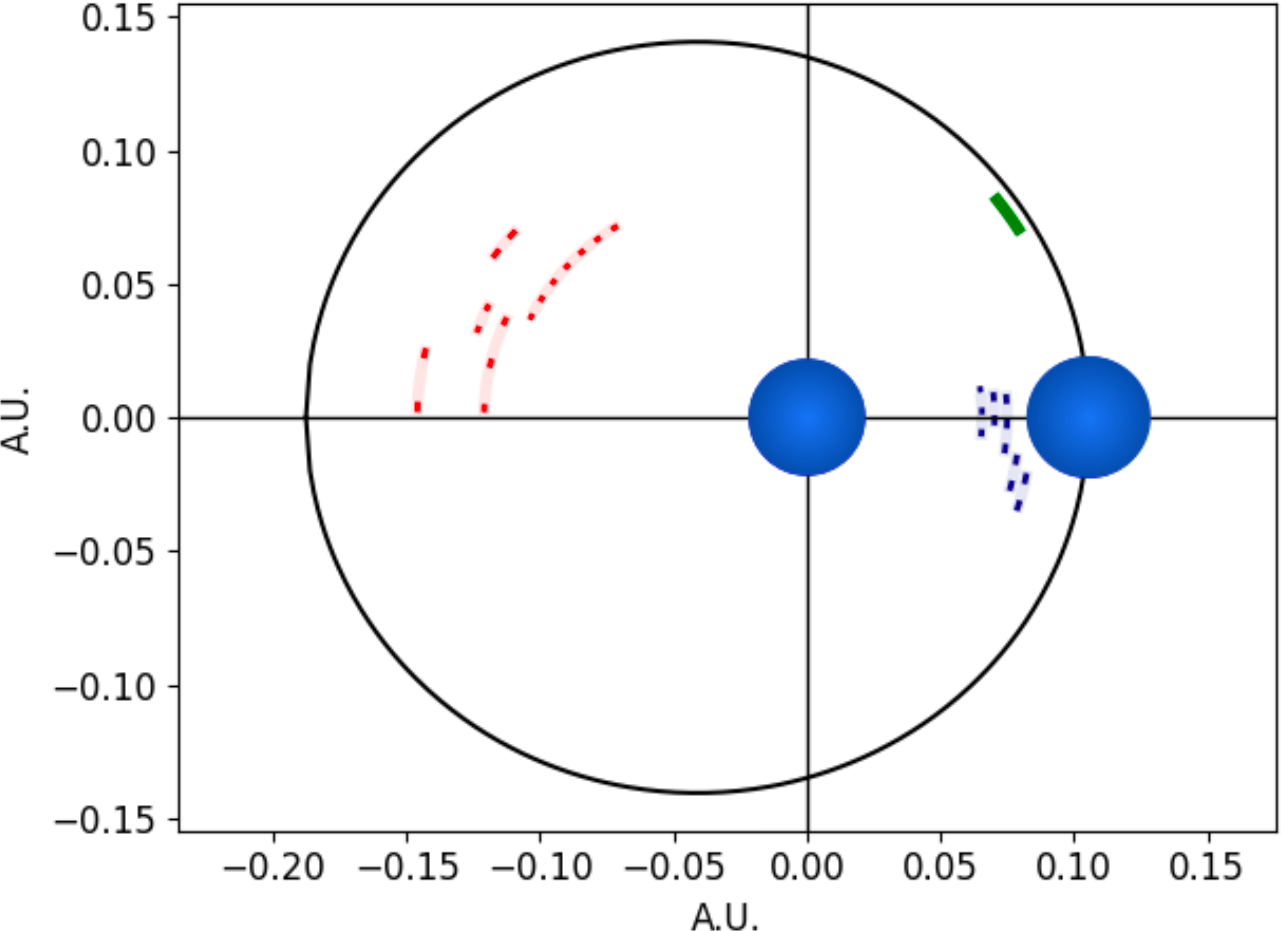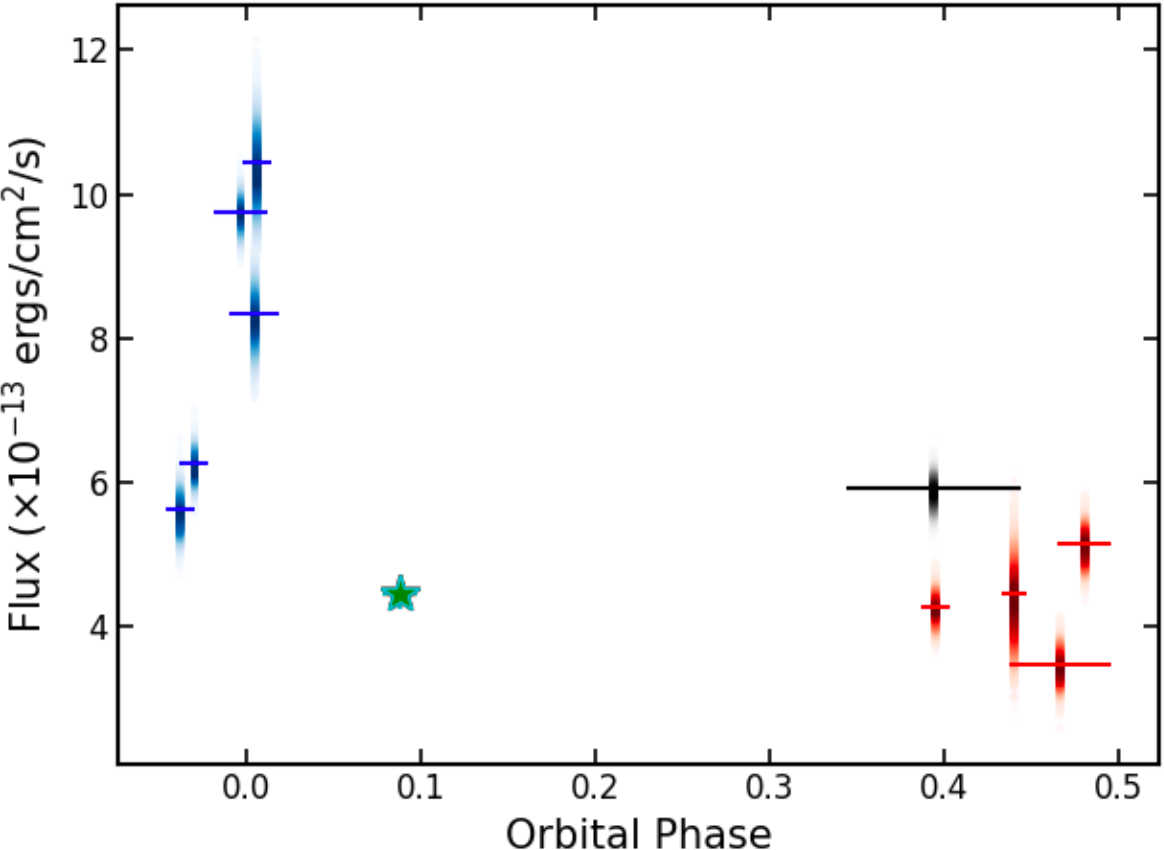NICER / ISS Science Nugget
for June 1, 2023
The Flaring Dance of a Magnetic Duo
The binary star system known as Epsilon Lupi is unique: it is the only known example of two highly magnetic stars orbiting closely enough that their magnetospheres overlap at all times. Traveling in their modestly elliptical orbits, the two hot and massive stars move closer and farther apart in each 4.6-day binary period -- at closest approach (periastron), the distance between them is just 10% of the Earth's orbital radius around the Sun. To test a prediction about how stellar magnetospheres might interact in this unusual environment, a team led by V. Petit and B. Das (Univ. of Delaware) successfully proposed for observations through NICER's peer-reviewed General Observer program, and these observations were carried out in 2021 over five successive orbits of eps Lupi. The results of that campaign are soon to be published in the peer-reviewed UK journal Monthly Notices of the Royal Astronomical Society.
X-ray emission that varies with orbital phase is known from a handful of binary star systems. Such emission is generally thought to arise from the collision of dense and energetic winds emanating from each of the stars, but the observations by Das et al. paint a different picture: the X-ray emission brightens in a flare at periastron that is too short-lived to be consistent with the colliding-wind scenario. Instead, the authors suggest that an alternative hypothesis -- the repeated breaking and re-establishing of a magnetic link between the two stars -- provides the energy that heats local gases to X-ray emitting temperatures. This "reconnection" mechanism is ubiquitous in turbulent magnetic systems (including our Sun's magnetosphere), but the eps Lupi discovery provides the first evidence for its presence in a magnetic stellar binary.


Figure:
Left: A schematic depiction, to scale, of the binary star system Epsilon Lupi, with coordinates in Astronomical Units (A.U. -- the mean Earth-to-Sun distance). The mildly eccentric orbit (black ellipse) of one of the stars is traced in the rest frame of the other star, with the blue circles (also to scale) showing the positions and sizes of the two stars at closest approach (periastron). Blue and red tracks represent NICER observations at periastron and near apastron (largest separation), respectively; darker shading indicates the actual NICER data-acquisition intervals (snapshots on successive ISS orbits), with radial offsets between tracks used to distinguish observations obtained on different days. The green track represents an archival observation made in 2014 with the European Space Agency's X-ray Multi-Mirror (XMM) Newton telescope. (Credit: Das et al. 2023)
Right: X-ray brightness of Epsilon Lupi as a function of orbital phase, with NICER and XMM data color-coded as in Figure 1; the black point represents a measurement partially contaminated by high radiation background. Error bars with varying opacity reflect uncertainties derived from best-fit model parameter values. The narrowness of the flare around periastron (phase 0.0) points to reconnection in the overlapping magnetic fields of the two stars as the source of the excess X-ray emission. (Credit: Das et al. 2023)
<< Previous
Main Index
Next >>